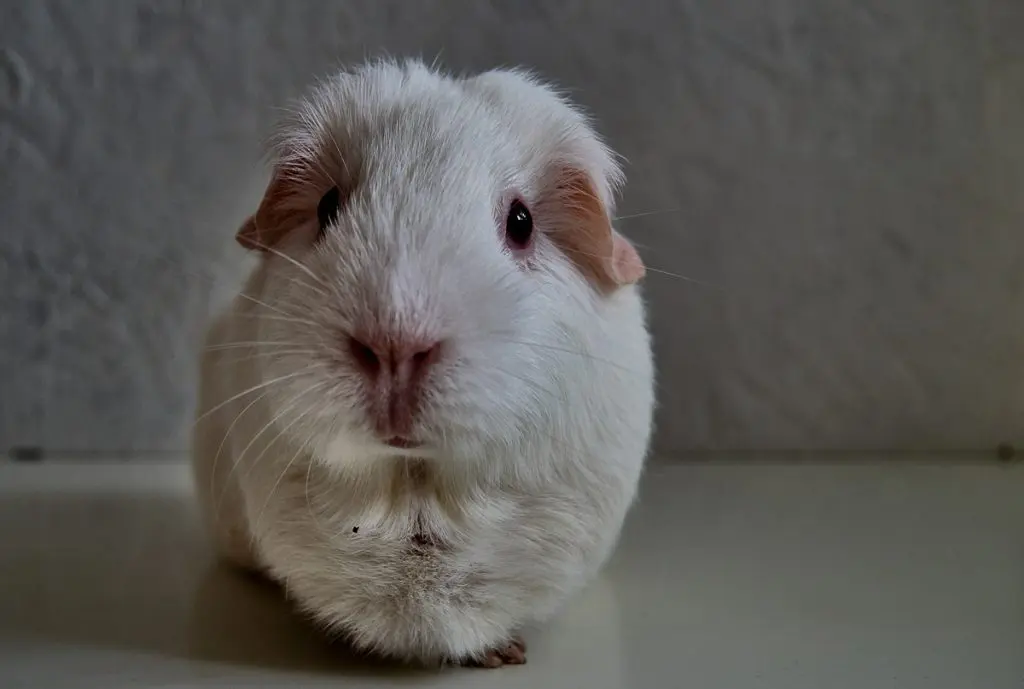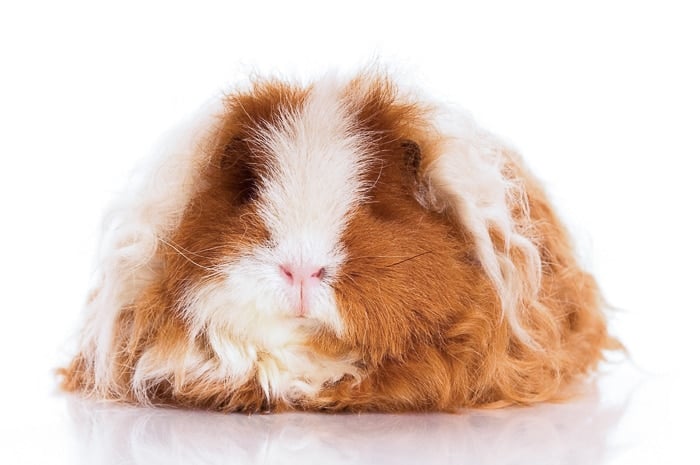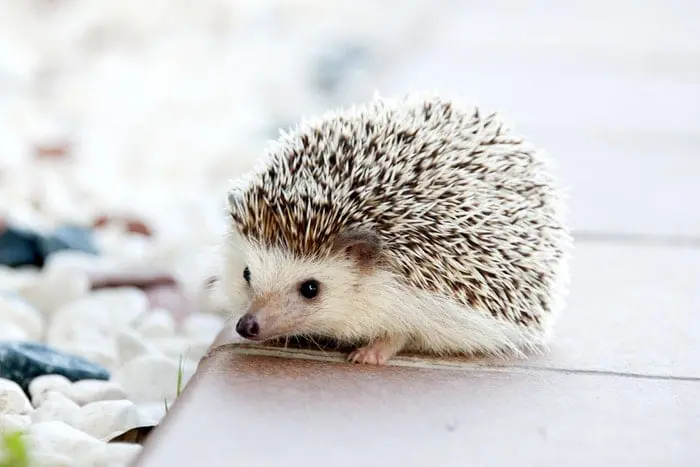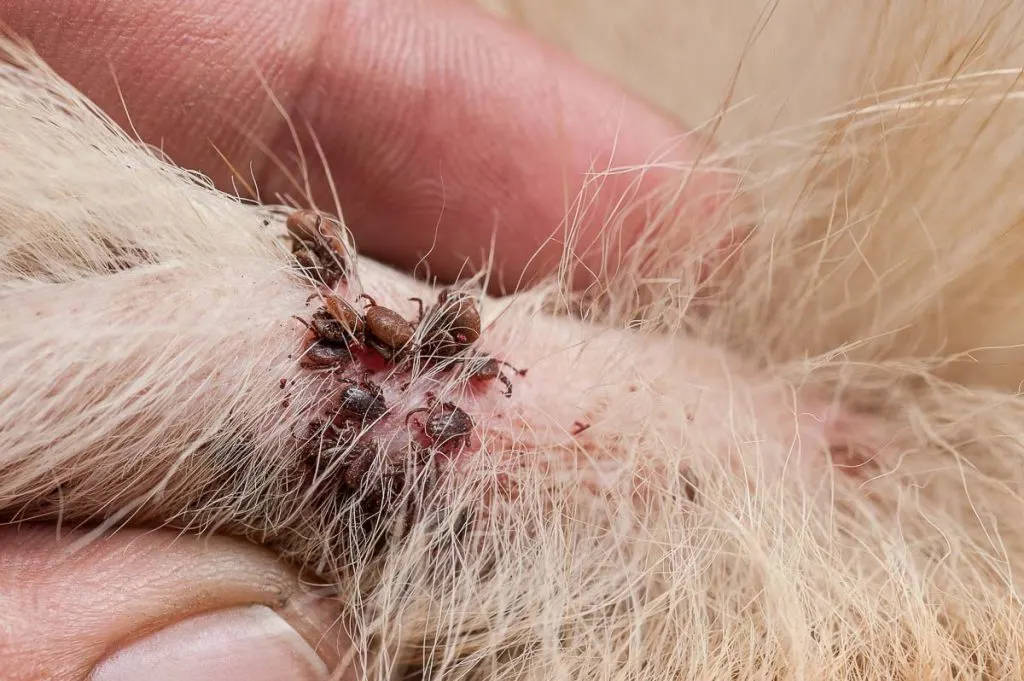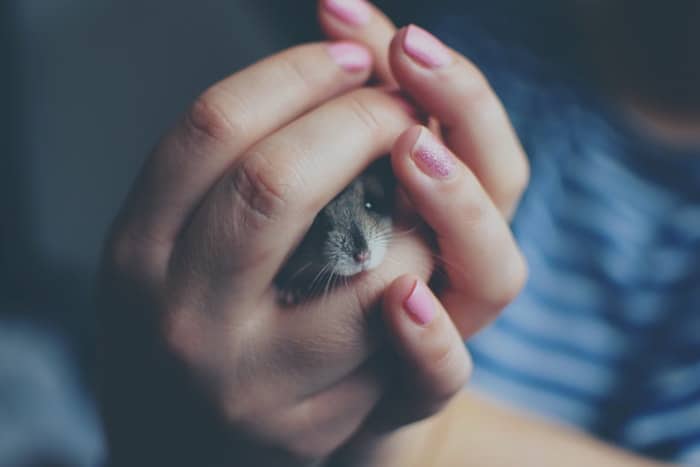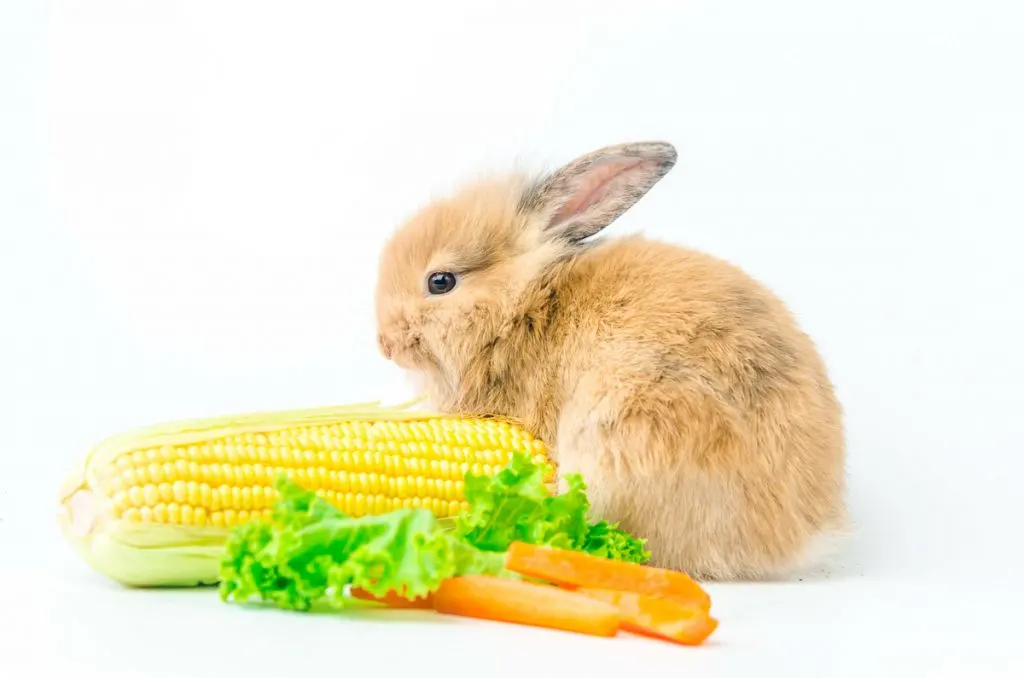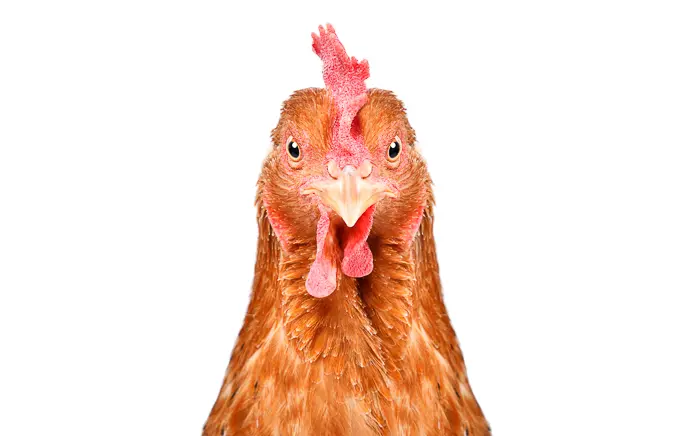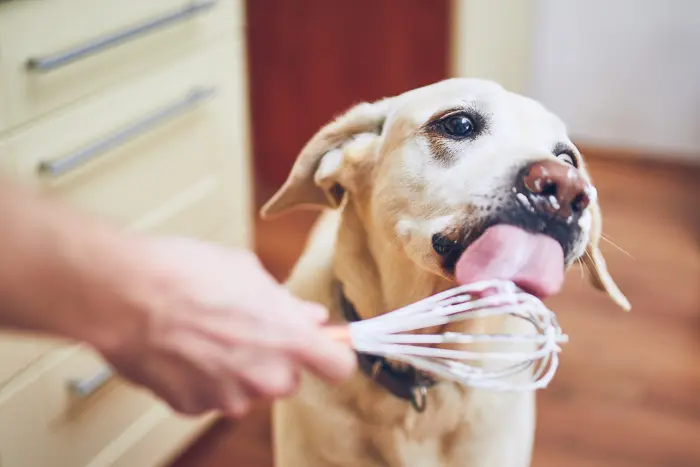Bearded Dragon Eggs are a real thing that you may need to be familiar with if you have a female bearded dragon! For many bearded dragon owners, bearded dragon eggs and egg-laying will not be a thought when bringing your pet home for the first time. But, if your beardie turns out to be female like my first one was, you may be in for quite a surprise!
Dr. Jess explains more of what you need to know before you bring your female beardie home with you.
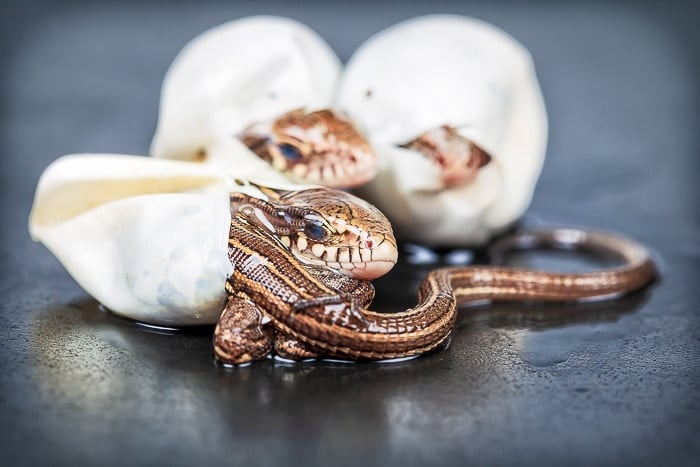
When Do Females Lay Eggs?
- After mating with a male
- After reaching sexual maturity (even without a male present or even without mating with a male!) just like how chickens can lay eggs without mating with a rooster!
Do Male Bearded Dragons Lay Eggs?
The quick answer to this question, is no.
Male bearded dragons cannot make or lay eggs.
Only female bearded dragons can lay eggs, whether they or fertilized or not. I'll discuss this further here in a few minutes…
When Do Bearded Dragons Start Laying Eggs?
Female bearded dragons can lay unfertilized eggs as early as 9-10 months of age, although this is more so a rarity.
You definitely do not want your female dragon laying eggs while she is still young and growing.
If she lays eggs before she is fully grown, she risks a loss of calcium in her body. Having low calcium (also known as ‘hypocalcemia‘) or calcium loss that early can result in having her growth stunted and her lifespan shortened by quite a bit.
Even though they may start to lay eggs as early as 10 months of age, many female bearded dragons may not lay eggs until years later in life and some females don't ever lay eggs in their lifetime.
What is a “Gravid” Female?
Most female bearded dragons become ‘gravid‘, the ability to make and lay eggs, between 2 and 4 years of age, when they are sexually mature.
Those eggs can be either fertile or infertile, depending on whether she has mated with a male bearded dragon, discussed in more details below.
Can Females Store Sperm?
Yes! Female bearded dragons can store sperm for up to a year in their reproductive tract.
This is one of those natural built-in survival of the species mechanisms that female bearded dragons have.
So, even if it’s been a while since your female was around a male bearded dragon, there is still a chance that you may have baby dragons popping up!
So keep this fun fact in mind if you have a female beardie!
Can a Female Beardie Lay Eggs Without a Male?
I get this question the most when it comes to bearded dragons and egg-laying.
For some reason, I also get it a lot when discussing chickens and laying eggs without a rooster, so this is a great question that many people have and both have the same answer!
Like many birds and reptiles, female bearded dragons can lay eggs without a male, but these eggs will be infertile.
This is completely normal and chickens are a prime example of an animal that lays infertile eggs regularly.
Unfertilized eggs will not develop into baby bearded dragons and should be removed from the enclosure or they will go bad and cause a whole set of different issues.
How Often Do Females Lay Eggs?
Some females will lay their clutch (their eggs) over the course of 1-2 days, then rest for a few weeks, and then repeat the process all over again.
All together, this happens within a few months of time.
Some females will lay eggs more often than others.
Remember that some females may never even lay eggs ever!
Fertile Bearded Dragon Eggs:
I've discussed how females can lay infertile eggs without mating with a male bearded dragon, but now let's talk about fertilized eggs, the birds and the bees!
Fertilized eggs occur when a female bearded dragon mates successfully with a healthy male bearded dragon.
Remember that females can store sperm up to 1 year in their reproductive system, so the mating does not need to be incredibly recent for the female to start producing fertilized eggs!
Healthy fertile eggs will swell up and can double from their original size as the embryo grows and develops, just like other babies do.

How Many Eggs Do Bearded Dragons Lay?
Bearded dragons lay their eggs in clutches or groups. Typically, 15-30+ eggs are produced in a single clutch.
This will vary from individual female to individual female, some producing less per clutch and some producing more.
A female bearded dragon can lay several clutches, usually 2-4 clutches, during their mating season.
How Long Does It Take for a Bearded Dragon to Lay Her Eggs?
This is another question I get asked a bunch.
If you catch your female laying eggs, it may seem like she is hard at work, and she is! But just how long should you expect her to take to lay all of her eggs before you should start to get worried?
As mentioned above, it can take her a couple of days for her to finish laying each clutch. Yup…. it can take days.
She may choose to rest for a few days to a few weeks, before repeating the process and laying another clutch.
It is not uncommon for it to take months for her to stop laying altogether. (see “How Often Do Bearded Dragons Lay Eggs” section above!)
How To Tell if Female Bearded Dragon is Gravid?
If your female dragon is gravid, you should be able to see some of the following physical and behavioral changes:
- Lethargy: Becoming even less active than normal when close to laying her clutch
- Anorexia: Decreasing the amount she is eating or not eating all together, when close to laying her clutch
- Weight Gain: Sudden weight gain with a noticeable larger abdominal area (belly region)
- Changes to excrement: Changes in her bathroom habits, including the changing in color of urates to a pinkier tint
- Physical Changes: Hard marble-like lumps palpated (felt with the finger) within the abdominal area. Be careful when trying to palpate her belly to feel the eggs, as you do not want to damage the eggs or your female.
- Behavior Changes: Such as increased nesting behaviors like digging
Your treatment of your egg-laying beardie should be the same regardless to whether she is laying fertile or infertile eggs.
She will need the same assistance from you either if the eggs or fertile or not, so you handle the situation the same!
Once you’ve determined that your dragon is gravid, you should immediately contact your local veterinarian with questions and concerns especially if this is your first time going through this process with a female bearded dragon.
They will help you walk through next steps.
But make sure that you check in with your veterinarian to make sure that everything is going smoothly and you should not be concerned with anything while she is laying the rest of her clutch.
Handling Bearded Dragon Eggs:
Handle the eggs the least amount as humanly possible because the more you handle them, the more opportunity there is that you may harm the baby dragon inside of the egg.
I say this because I have seen eggs handled without this care and the end result was very sad for the pet owner.
Less touching of the eggs, the better!
How to Tell if Eggs are Fertile:
This is another common question that I and a lot of other vets get from bearded dragon owners.
If your bearded dragon has a clutch of eggs and you are unsure of whether they are fertile or not, you can test them through a process called candling – something also done in bird eggs.
Candling is done by putting a 1-2 week old egg at the end of a flashlight and observing what the interior of the egg looks like. This never gets old – it is always incredible to see the beauty that is inside these animal eggs!
Here's how you can easily tell if you have a fertilized egg or not….
When the flashlight's light shines through to the interior of the egg, you will see:
- If you see a pink embryo, or reddish lines or ‘veins‘ inside the egg, then your egg is most likely a fertilized egg. It is typically pretty obvious that there is “something” inside these fertilized eggs!
- If you see a yellowish interior, with no pink or red ‘veins' prominent, it is likely not a fertilized egg.
Why Supplement Calcium to Gravid Female Bearded Dragons?
If it turns out that she is gravid, you will want to increase her intake of calcium. Let me give you some more info on this to send the point home about how important this calcium supplement is to the health of your female.
In order for the female to make her eggs, she will need to draw calcium from her own bones, where her body naturally stores calcium supplies.
So, if this calcium that was taken from her bones and is not supplied back to her in the form of food and supplements, her body can become void of more and more calcium.
This decrease in calcium, or hypocalcemia, can make her more likely to have weakened bones and teeth.
Just like osteoporosis in humans, female bearded dragons can have osteoporosis and Metabolic Bone Disease, making broken and brittle bones so so much more of a reality.
I could write an entire article just on bearded dragons and Metabolic Bone Disease, but I'll leave you with just the basics of this debilitating disease for now:
Major Indicators of Metabolic Bone Disease in Bearded Dragon:
- Broken bones/ Bone fractures
- Swelling, lump/tumor, or deformed mandible (lower jaw)
Other Major Symptoms of Metabolic Bone Disease:
- Paralysis of parts of the body
- Fasciculations, tremors, or “the shakes”
- Inappetance/anorexia
- Lethargy or lack/decrease in energy
- etc.
If your dragon does not have enough calcium in her diet while gravid, her eggs might not form a properly hardened shell. This is obviously a major concern for the baby dragon that is housed inside the softer egg shell! Less protection for the baby and for the mother involved!
Soft eggs can cause serious health complications.
Calcium-deficient eggs can crack inside the female during laying, leaving her very vulnerable to a multitude of internal infections throughout her reproductive tract. Left to go on for too long, this infection can spread to full body infections and even septicemia (all-over body infection in the bloodstream) and death.
Calcium-deficient eggs can also increase the chances that the mother will become egg-bound.
The female can become egg-bound if the eggs become unable to pass through the reproductive tract, such as in cases where the eggs are cracking inside the reproductive tract and getting stuck, plugging up the tract so that other eggs can not pass along the tract, blocking passage.
This is painful and life-threatening for your pet and seeking veterinary help needs to be immediate!
More on egg-bound females a little later in this article.
Supplementing Calcium to a Gravid Female Bearded Dragon:
Most beardie owners find it very easy to supplement their gravid female bearded dragons with calcium because you can add it to the food that you are already providing to your pet.
It is recommended that the owner sprinkle calcium powder on top of live mealworms or crickets and feed the live, store-bought insects to the female.
By being ‘sneaky' and sprinkling the calcium supplement onto delicious foods ensures that the supplement is ingested by the dragon and not looked over because there was something more enticing being offered at the time.
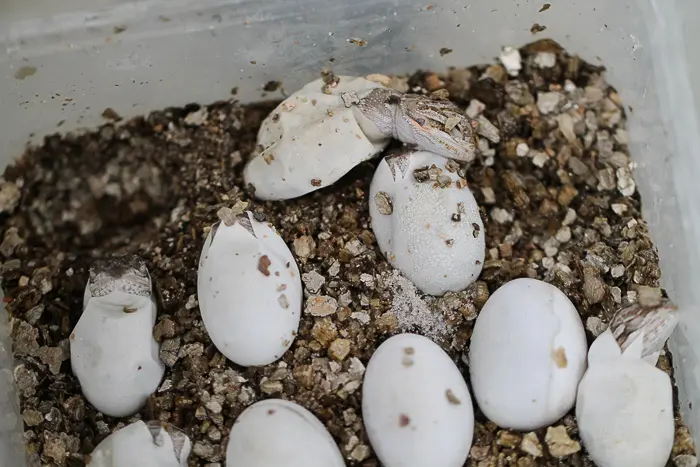
Extra Care During Gestation:
There are other ways you can help support your female bearded dragon besides just giving her a nice calcium supplement with her daily meals!
Make sure that she is healthy and comfortable while gestating.
In addition to a normal healthy diet, you may want to offer extra treats as calories. It doesn't matter if she is laying fertile or infertile eggs, she will still need the added nutrition to keep her going.
It takes a lot of work, and a lot of energy is expended to lay those eggs. She will need the extra nutritional support of more calories and nutrients during this time.
How to Tell When a Female Bearded Dragon Will Lay Eggs?
This is the 4th most common question that I get when being asked about bearded dragon eggs.
When a gravid female dragon is ready to lay eggs, many of her behaviors will change. She will be acting “funny” or “weird“, which is what most dragon owners will describe it as to me before ‘I dig‘ (a little pun!) a little further into what “funny” really means.
Here are some signs that she may be ready to lay her eggs:
- Anorexia/inappetance
- Scratching at the corners of the enclosure and/or increased digging
- Expanded, bloated abdomen with marble-like lumps
- Hyperactivity/Fidgety/uncomfortable – increase in movement / running / irritated expressions
Once your bearded dragon starts to show signs that she is preparing to lay her eggs, you will likely want to prepare a simple lay box for her to use. More on lay boxes below…
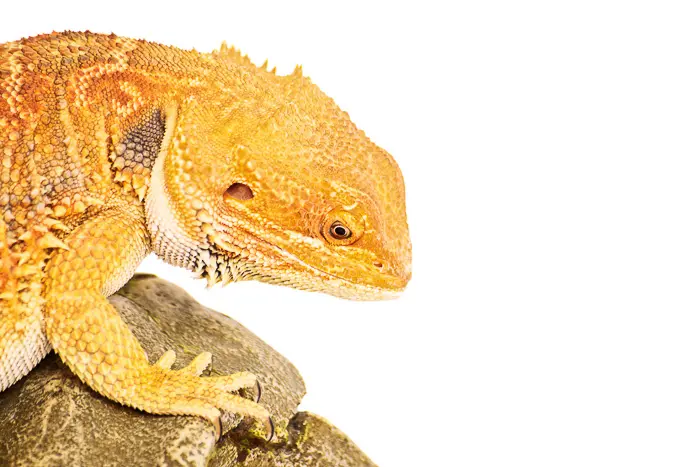
How to Build a Lay Box:
A lay box allows the pet owner to help create an adequate environment for the female bearded dragon to lay her eggs and is quite a simple contraption to make.
If adequate conditions aren’t provided, the female dragon will not lay her eggs until she finds a good location to do it, which can cause some major issues.
Bearded dragons that withhold their eggs can cause them to become egg-bound. The issues with becoming egg-bound were discussed above.
One of my favorite options for a lay box is to find a plastic tub or container with an 8 to 10 gallon capacity and a secure lid.
Fill it almost to the top with at least 6-7 inches of moist, sandy soil that is damp enough to gently clump when squeezed together. Test the sand with your fingertips.
Most female dragons will create tunnels and bury their eggs as they lay them, so make sure to have plenty of moist sand for her to dig in.
Care of the Female Bearded Dragon After Laying Eggs
After the eggs have all been laid and the hole covered up, your pet will be exhausted, as she just went through the equivalent of a human mother having a child!
You must make sure that your female bearded dragon rehydrates because the eggs will pull a lot of fluid from her.
You will also want to ensure that she and regains her energy and her strength after all that hard work.
- Give her water! Make sure that the dragon has access to and gets plenty of fresh clean water. Also, consider giving her a nice warm bath to rehydrate and rinse off as she may be a bit messy after digging in the sand.
- Replenish nutrients: Make sure the female consumes high-quality food during this period, making sure to offer green vegetables with high-nutrient value so that she can regain some of the nutrients lost during the making and laying of her eggs (especially protein and calcium!).
- Clean the environment: Make sure that her enclosure is clean and she has a safe space to rest. Remove any infertile eggs from the enclosure so that they do not spoil and cause health issues. If you are unsure, performing the candling procedure described above or contacting your local veterinarian for more information on what to do.
If your beardie goes too long without food , it’s time to see a vet to get a radiograph (x-ray) and to monitor her condition because she may be egg-bound without you knowing it. And if you have an eg-bound female, the earlier, the better for treatment!
Do Bearded Dragons Eat Their Eggs?
Yes, they may.
Female bearded dragons may eat their own eggs when they are left alone to eat them.
This should not be too alarming as this is not uncommon in many wild animal populations.
Like I have mentioned a few times already, this issue is fixed by removing the infertile eggs from the lay box after she is done laying her clutch.
Remember that we don't want to disturb her while she is laying and that laying a clutch can take days!
Bearded dragons may also eat other types of eggs, as long as they are cooked and prepared properly!
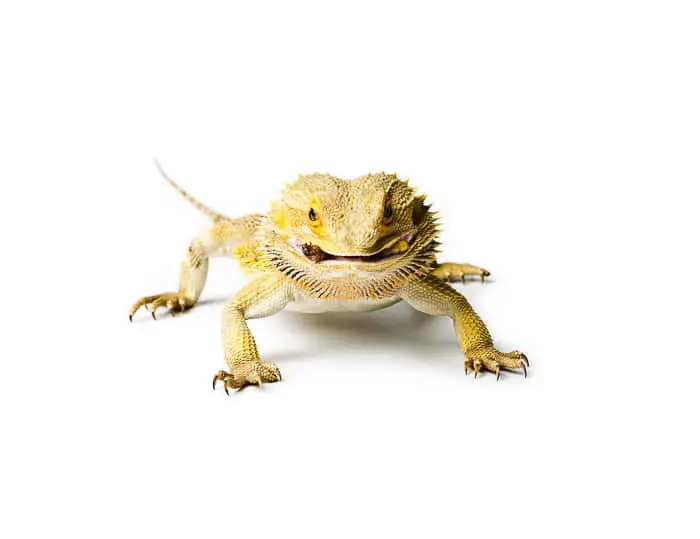
What to Do for an Egg-bound Female Bearded Dragon:
Ekkk! Scary thought, right?!?
A normal gravid female bearded dragon will be fairly alert, bright, and active.
If a female dragon becomes egg-bound, she will very quickly start to act different. Owners, often describe egg-bound females as slow, tired, and not wanting to move or eat.
She will start to show signs that she is not feeling well and that she is sick, very, very quickly.
If you feel that your bearded dragon is not feeling well after egg-laying, you should contact your veterinarian immediately.
Your veterinarian can help and the sooner the help arrives, the more likely your pet will be given a positive prognosis!
Veterinary Diagnostic Tools for Egg-Bound Females:
These are the go-to diagnostics that your vet may use to help figure out what is going on:
- Physical Exam (pulse, respiration rate, palpation of body, etc.)
- Ultrasound (sometimes referred to as a sonogram in human medicine)
- Blood work (blood testing to see levels of blood markers)
- Radiographs (also known as x-rays to visualize eggs in abdomen)
When a female is found to be egg bound, your veterinarian will typically recommend a hormone-based medical treatment, like oxytocin or arginine vasotocin, to try and induce the dragon into passing eggs in a natural way.
Surgery is only performed after other types of attempts have failed.
Reptiles typically do not do well under anesthesia and their small size makes surgery difficult and tedious, and just plain hard.
How to Prevent a Female Bearded Dragon from Laying Eggs:
This question rounds out my top 5 most asked questions surrounding bearded dragons and egg-laying- can you prevent a bearded dragon from laying eggs? Great question – easy answer.
Unfortunately, there is no way to prevent female bearded dragons from laying an infertile clutch.
If they determine it is time for them to do start laying eggs, they are going to start laying eggs.
A sexually-mature female bearded dragon will likely lay eggs, just like a teenage female will likely start to ovulate once she hits puberty.
Summary:
Bearded dragon eggs are a common thing to see in a female bearded dragons lifetime.
Whether they are fertile or infertile eggs depends on if there was a mating between a male and female bearded dragon and how long ago that mating occurred.
Either way, there are many things to consider and take action on, to ensure that your female bearded dragon is taken care of during the egg-laying process.
During any of the egg-laying process, you have questions, contact your local veterinarian for more information. We are happy to answer your questions!

![[Vet Explains Pets]](https://vetexplainspets.com/wp-content/uploads/2024/09/cropped-vetlogo-199x66.png)



